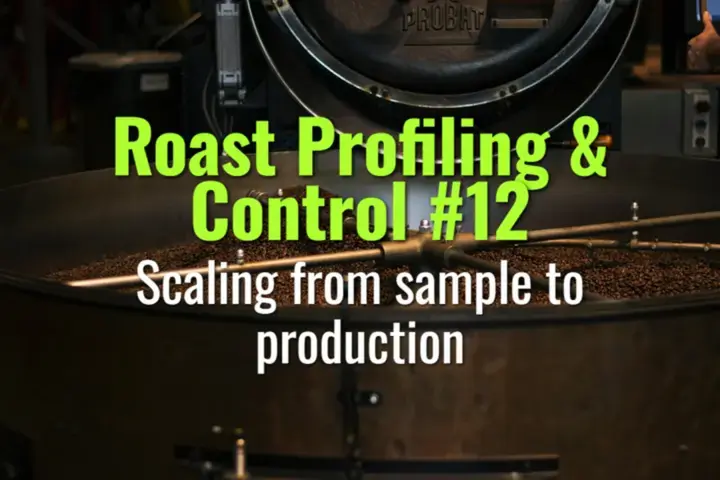Scaling from sample to production
This topic explains how to translate insights from sample roasts into consistent full-batch production profiles.
- Coffee Basics Nerds
- 1 min read

Key Concepts
-
Purpose of Scaling:
-
Ensure that the roast profile developed in small samples produces the same flavor and development in larger batches.
-
Maintain consistency across different roaster sizes and capacities.
-
Considerations When Scaling:
-
Thermal Mass: Larger batches take longer to reach first crack; adjust charge temperature accordingly.
-
Rate of Rise (RoR): Modify heat input to replicate the sample curve while accounting for slower response in bigger batches.
-
Airflow & Drum Speed: Adjust to maintain even heat distribution and proper bean agitation.
-
Development Time: Keep the Development Time Ratio (DTR) proportional to the sample to achieve similar roast characteristics.
-
Testing & Validation:
-
Roast intermediate pilot batches if possible before full-scale runs.
-
Compare color, aroma, and cupping results to sample batches.
-
Adjust gas, airflow, and drum speed iteratively until the production profile matches the desired outcome.
-
Documentation:
-
Record adjustments from sample to production.
-
Include environmental conditions, batch weight, and roaster settings.
-
Maintain logs for future reference and consistency.
Summary
Scaling from sample to production requires careful attention to thermal dynamics, airflow, and timing. Iterative testing and detailed logging ensure that the sensory qualities observed in small samples are faithfully reproduced in full-scale roasting.